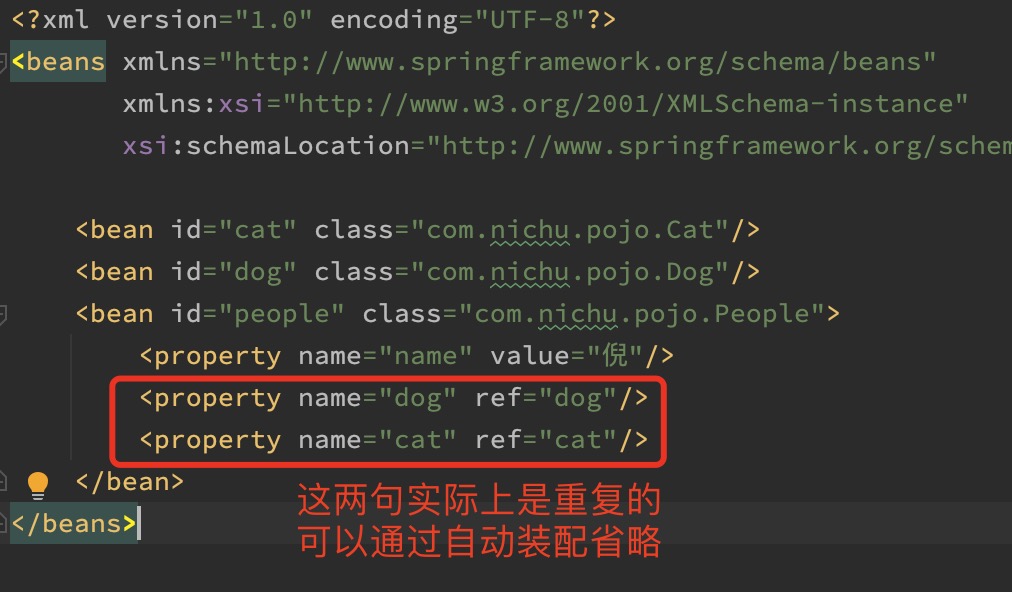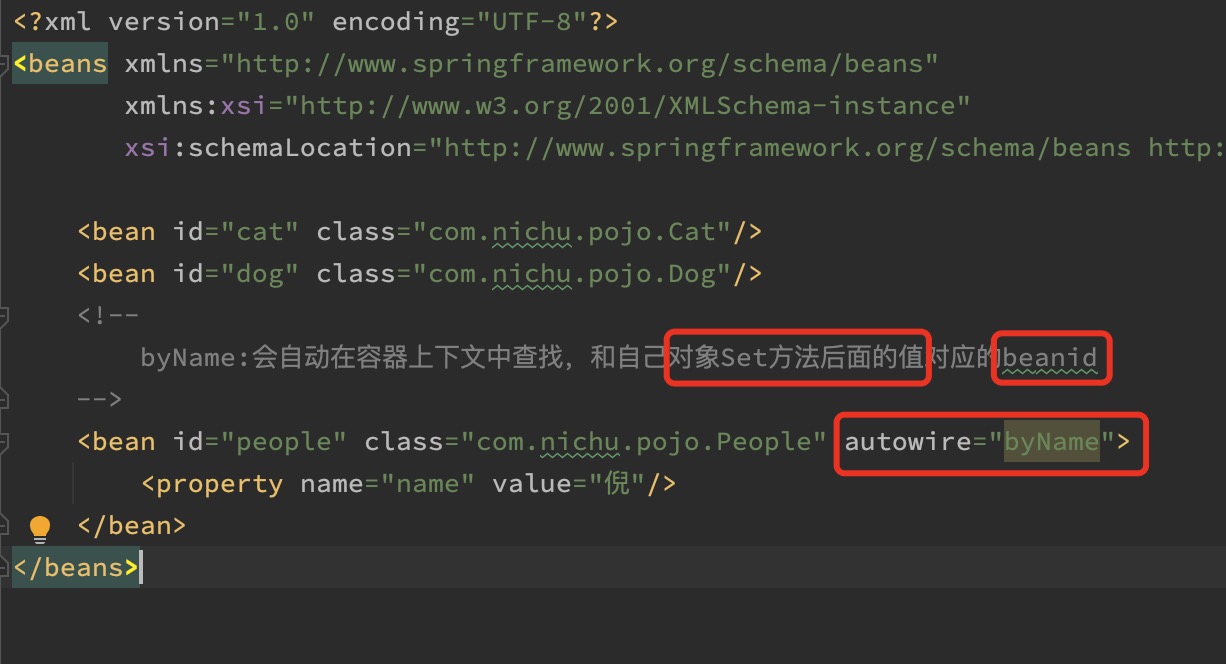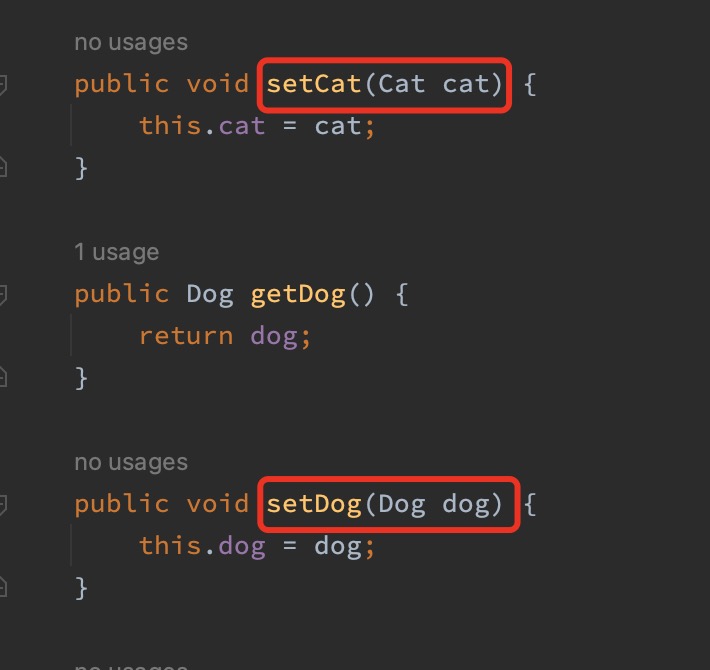Bean的自动装配
- 自动装配是Spring满足bean依赖的一种方式!
- Spring会在应用上下文中为某个bean寻找其依赖的bean。
在Spring中有三种装配的方式:
- 在xml中显示的配置
- 在java中显示配置
- 隐式的自动装配bean
一、测试
环境搭建:一个人有两个宠物!
二、ByName自动装配

1 | <!-- |


三、ByType自动装配
1 | <bean id="cat" class="com.nichu.pojo.Cat"/> |
小结:
- byName的时候,需要保证所有bean的id唯一,并且这个bean需要和自动注入的属性的set方法一致!
- byType的时候,需要保证所有bean的class唯一,并且这个bean需要和自动注入的属性类型一致!
四、使用注解实现自动装配
要使用注解须知:
- 导入约束:context约束
- 配置注解的支持:context:annotation-config
1 |
|
4.1 @Autowired
-
直接在属性上使用即可!也可以在set方法上使用!
-
使用Autowired我们可以不用编写Set方法了,前提是你这个自动装配的属性在IOC(Spring)容器中存在,且符合名字byName!
1 | @Nullable 字段标记了这个注解,说明这个字段可以为null |
1 | public Autowired { |
测试代码
1 | public class People { |
如果@Autowired自动装配的环境比较复杂,自动装配无法通过一个注解【@Autowired】完成的时候,我们可以使用@Qualifier(value = “xxx”)去配合@Autowired的使用,指定一个唯一的bean对象注入!
4.2 @Resource
1 | public class People { |
- @Resource既有byName也有byType
- 当byName找不到时,会自动使用byType
- 当byType重复时,可以通过@Resource(name=“xxx”)去指定
小结:
@Resource和@Autowired的区别:
- 都是用来自动装配的,都可以放在属性字段上
- @Autowired默认通过byType的方式实现,如果找到相同类型,就通过byName实现!【常用】
- @Resource默认通过byName的方式实现,如果找不到名字,则通过byType实现!如果两个都找不到的情况下,就报错。【常用】
- 执行顺序不同:@Autowired默认通过byType的方式实现,@Resource默认通过byName的方式实现。
五、Spring使用注解开发
在Spring4之后要使用注解开发,需要保证aop的包导入了。要添加context约束,配置注解支持。
1 | <!--指定要扫描的包,这个包下的注解就会生效--> |
5.1 常用注解
-
@Autowired:自动装配通过类型,名字。
-
@Resource:自动装配通过名字,类型。
-
@Nullable:字段标记了这个注解,说明这个字段可以为空。
-
@Component:放在类上,说明这个类被Spring管理了。
1
2
3
4
5
6
7/**
* @Component等价于<bean id="user" class="com.nichu.entity.User"/>
*/
public class User {
public String name = "倪矗";
} -
@Value:给属性注入值。
1
2
3
4
5
6
public class User {
//相当于 <property name="name" value="倪矗"/>
public String name;
}也可以写在set方法上
1
2
3
4
5
6
7
8
9
10
11
12
public class User {
private String name;
//相当于 <property name="name" value="倪矗"/>
public void setName(String name) {
this.name = name;
}
public String getName() {
return name;
}
}
5.2 衍生注解
@Component有几个衍生注解,我们在web开发中会按照三层架构分层!
- dao:@Repository
- service:@Service
- controller:@Controller
这四个注解功能都是一样的,都是代表将某个类注册到Spring中。
5.3 作用域注解
@Scope:可以设置Bean的作用域。
1 | //单例模式 |
5.4 小结
xml和注解:
- xml更加万能,适用于任何场合,维护简单!
- 注解不是直接的类使用不了,维护相对复杂!
xml与注解配合使用:
- xml用来管理bean。
- 注解只负责属性的注入。
六、使用Java的方式配置Spring
实体类:
1 |
|
配置类:
1 | //@Configuration代表这是一个配置类,相当于bean.xml |
测试类:
1 | public class MyTest { |
-------------本文结束感谢您的阅读-------------